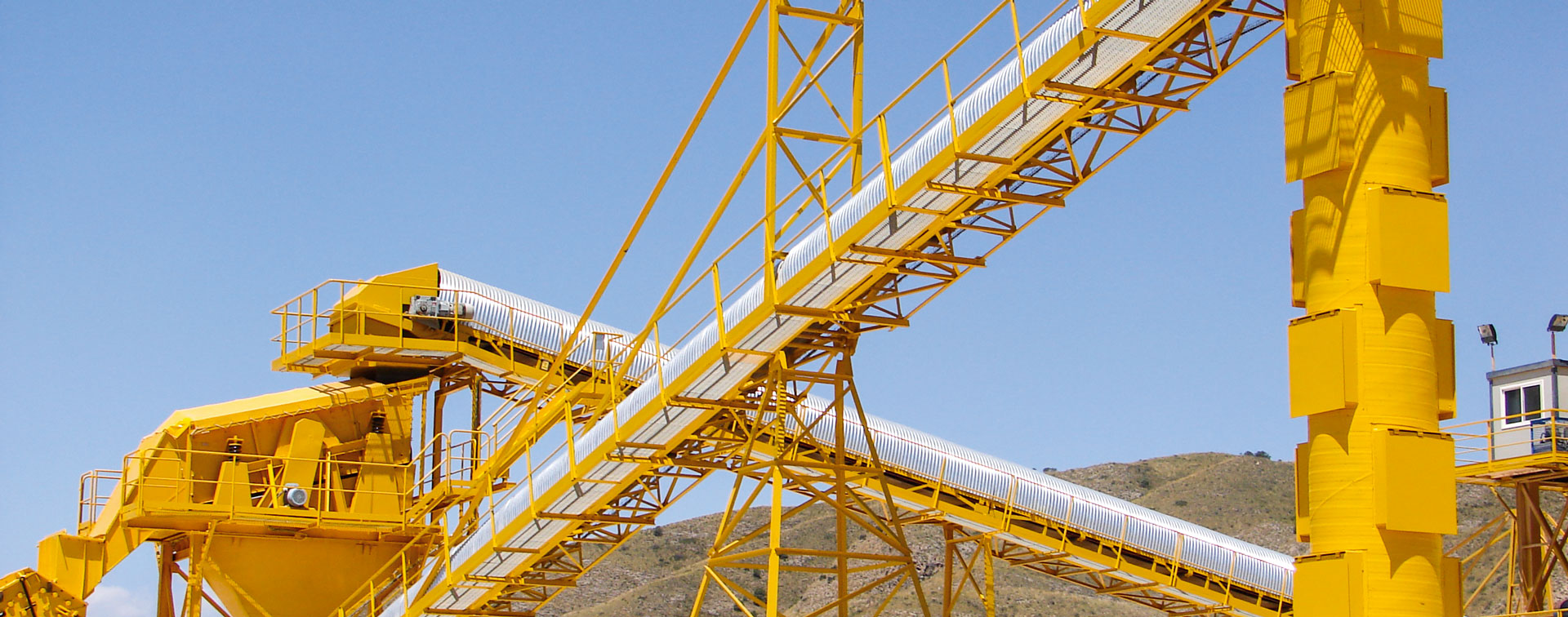Among the equipment used to transfer products between different elements of the production process, conveyor belts, along with screw conveyors and bucket elevators, are the most widely used due to their versatility and ease of use and maintenance.
Conveyor belts play a fundamental role in various industries by facilitating the efficient and safe transport of materials. Their use optimizes production processes, reducing time and operational costs, making them a crucial element in the supply chain and modern industry.
In this article, we will explore the different types of belts, as well as their benefits and applications.
Evolution
Conveyor belts, which initially consisted of simple manually operated or mechanically driven belts, have progressively evolved in line with technological advancements.
Today, conveyor belts incorporate the most advanced technology, not only in the selection of their components (low-friction belts and more efficient motorized systems) but also through the integration of energy management systems and smart technologies that allow for a more efficient use of resources. This makes conveyor belts essential components of industrial production.
Environmental Benefits
One of the greatest sustainability benefits of conveyor belts is their ability to reduce carbon emissions. By replacing manual or vehicular transport with automated systems, the need for heavy transport vehicles decreases, which in turn reduces greenhouse gas emissions. Additionally, the electric motors that power modern belts are more efficient and generate fewer emissions than internal combustion engines.
Energy Efficiency
Modern conveyor belts are designed to be more energy-efficient. They use high-efficiency motors and advanced control systems that automatically adjust speed and flow based on load and operating conditions. These systems not only save energy but also reduce component wear, extending the lifespan of the equipment and minimizing the need for frequent replacements.
Recycling and Reuse
Another important aspect of conveyor belt sustainability is the ability to recycle and reuse their components. Belts, pulleys, and other elements can be recycled at the end of their useful life, reducing industrial waste. Additionally, design improvements this component easier to maintain and repair, contributing to greater durability and a lower environmental impact.
Applications
Conveyor belts are essential systems in numerous industrial sectors due to their ability to optimize time, reduce operational costs, and improve load transportation. They are used in the food industry, where they have helped optimize processes while ensuring more hygienic handling. In the manufacturing and logistics industries, conveyor belts are indispensable for maintaining workflow efficiency.
We specialize in manufacturing conveyor belts for the mining and resource extraction sectors. Through a thorough needs analysis and the implementation of our conveyor belts, we optimize processes by reducing the use of heavy machinery, decreasing emissions, and preventing potential accidents caused by road traffic—one of the leading causes of workplace fatalities according to the Ministry of Labor and Social Economy’s accident statistics.
Technological Innovations
At JLM Ingeniería, we believe that automation and smart systems are key to improving the sustainability of conveyor belts. Automatic speed and direction adjustments based on load, PLC-controlled operations, and the integration of sensors for real-time equipment monitoring allow us to optimize usage, reduce wear, and detect potential failures for preventive maintenance.
All these technological innovations contribute to greater equipment durability, reducing the need for frequent replacements.
Conclusion
The use of conveyor belts in industrial processes is essential. We are committed to implementing transport solutions that not only optimize operational efficiency but also minimize environmental impact. Through continuous improvement, we continue to innovate, offering products that meet the highest standards of sustainability and efficiency.



